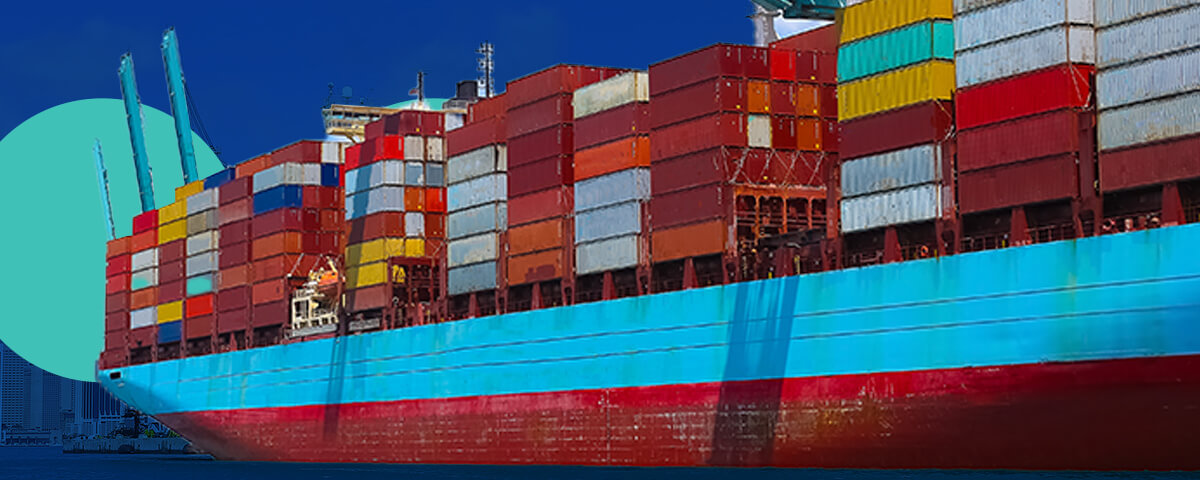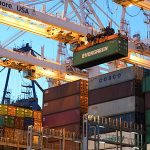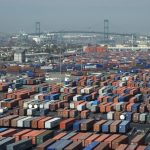What the Freight Is Happening with Freight Rates – Experts Mixed – ’23 Prediction
One of the things we often do in Universal Cargo’s blog is give shippers an outlook for how the international shipping freight rate market is behaving and looks to behave. Over the years, shippers have been able to use this information to prepare their businesses for cost influxes associated with importing goods and materials. In general, this is a good time, cost-wise, for shippers to import or export goods. However, the international shipping industry, including its experts and analysts, is giving mixed signals on how freight rate markets will behave throughout the rest of 2023.
In this blog post, we’ll sift through these signals and see how the rest of the year is shaping up for freight rates and shippers.
Analysts Saying ’23 Carrier Profits Down & Shippers’ Savings Up
Many international shipping experts and analysts see 2023 as a year of freight rate relief for shippers and plunging profit for ocean freight carriers.
Greg Knowler opened a Journal of Commerce (JOC) article on the subject with:
Sharply correcting container shipping markets will result in plunging profitability for carriers this year, but massive savings in transport costs for importers and exporters in major markets, according to analysts.

Such predictions a quarter of the way into the year aren’t particularly hard to make, as cargo levels along with freight rates tumbled during the second half of last year and have continued to do so to this point in 2023. Knowler shares the stark contrast in what shippers are paying to move their cargo over the ocean:
By the start of April, spot rates on the trans-Pacific and Asia-Europe trade lanes were down by up to 90 percent compared with the same time last year, according to various rate indices tracked by the Journal of Commerce.
Contract rates on both trades have also fallen sharply, with data from rate benchmarking platform Xeneta showing Asia-North Europe long-term rates of 90 days or longer are down 45 percent year over year, while Asia-US West Coast rates are down 80 percent from this time last year.
Freight Rate Increases & Fees About to Hit?
While it still seems we haven’t seen the bottom of freight rates yet, Mike Wackett reports in the Loadstar that the bottom may be within sight, and we’re just weeks away from carriers launching rate correction programs that will include an “onslaught” of increases in freight rates and fuel-related fees:
A definite end to rock-bottom freight rates could be in sight, as carriers take advantage of tight capacity management to launch rate restoration programmes across their networks in the next few weeks.
Moreover, shippers can expect an increase in bunker surcharges, as the shipping lines ramp up BAFs to mitigate the impact of higher fuel costs.
The ocean carriers are preparing to unleash a barrage of GRIs this spring, in order to shore-up freight rates ahead of the peak season, and Hapag-Lloyd has led the charge with a shock [sic.] $1,000 per 40ft increase on shipments from Asia to the US from 1 May.
There are definitely some mixed messages for shippers here regarding how good freight rates will look for them through the year, especially when it comes to the spot rate market. But carriers do have a number of weapons at their disposal to increase rates. These include general rate increases (GRIs), fuel adjustment factors (BAFs), peak season surcharges (PSS), and blanked (cancelled) sailings.
Sometimes, carriers have trouble getting surcharges and fees to stick because other carriers undercut them. We saw blank sailings be very effective in bringing up freight rates early in the pandemic by dropping capacity well below the initial dip in demand right before demand skyrocketed. However, blanked sailings during the current plunge of demand haven’t been enough to keep freight rates from falling. Perhaps they have kept rates from going as low as they could have though.
Often, especially in this age of carrier alliances, fees, surcharges, and blanked sailings from carriers feel coordinated, giving at least initial boosts to freight rates. Next month will likely see at least an initial freight rate boost. However, it’s hard to know if carriers will be able to maintain freight rate gains they achieve or if the fees and surcharges on the way will only show up as a little blip on the radar.
Industry Mixed Signals
There are “mixed signals” in the container shipping industry in general right now according to a Freight Waves article by Greg Miller:
Spot container freight indexes are still falling. Cargo shippers are signing annual contracts at sharply lower rates than last year. Import demand continues to be crippled by high inventories. A massive wave of new container ships is now hitting the market in full force.
And yet, the container shipping industry does not appear to be battening down the hatches for a looming storm. It is not behaving like an industry facing an imminent crisis.
The rates paid by liner companies to charter container ships bottomed out earlier this year and are now increasing. The duration of charters is rising as well.
The number of idle container ships has decreased in recent weeks. Liner companies continue to buy more vessels in the secondhand market.
The expected tsunami of ship recycling has yet to occur. The number of older ships demolished year to date is lower than expected. And container lines continue to place orders at shipyards for more vessels.
Are ocean freight carriers still riding high on their incredible hundreds-of-billion-dollar-profits over the last few years that they’re being reckless? Or do they see the plummeting market turning around soon? Maybe they’re just confident in their massive profits carrying them through a tough period into the next up season for which they’re now preparing.
Markets in general have a way of going up and down. Economic downturn has greatly reduced cargo volumes, creating heavy downward pressure on freight rates. This created supply chain relief from record-breaking high freight rates and port congestion that were largely due to incredibly high cargo volumes spurred by consumer goods buying, which were in turn spiked by lockdown policies and government stimuli. Despite economic uncertainty, no one would expect the economy to remain at the lows we’ve been seeing forever.
In a House hearing I wrote about in Universal Cargo’s last blog post, American Cotton Shippers Association President and CEO William Allen said, “This reprieve is temporary. Our economy will strengthen. Cargo volumes will increase.”
It would appear ocean freight carriers are counting on that recovery to happen soon.
What It All Adds Up to for 2023
Now it’s prediction time.
I think we will see an increase in volume this upcoming peak season. While I obviously don’t think it will be as strong of a peak season as we’ve seen in the last few years, which basically had continuous peak season, I would expect freight rates to rise some during it with the increase that is seen. Reports still talk of businesses flush with overstock, and there’s still obviously economic uncertainty. However, I believe we’re falling back toward the typical international shipping industry’s seasonal ebbs and flows, just that of a below-average economic year at the moment.
Unfortunately, there are risks that could make this year’s peak season freight rates spike higher than seasonal patterns would normally cause. In particular, there’s a good chance the ILWU contract situation won’t be resolved by then. If labor action, which tends to accompany contract negotiations, takes place during the peak season, we could see serious congestion on the West Coast and upward pressure on freight rates.
Shippers continuing to divert cargo to East and Gulf Coast ports should help to give some mitigation to disruptive labor action along with the economy still being on the slower side.
As for next month and the lead-in to the peak season, increases that carriers try to implement will likely be limited by the increase in capacity hitting the industry and perhaps a bit more of a competitive spirit from carriers with alliance uncertainty brought by Maersk and MSC splitting the 2M Alliance. However, as April ends, we could very well hit the bottom of falling freight rates, with leveling out and modest increase to follow.





